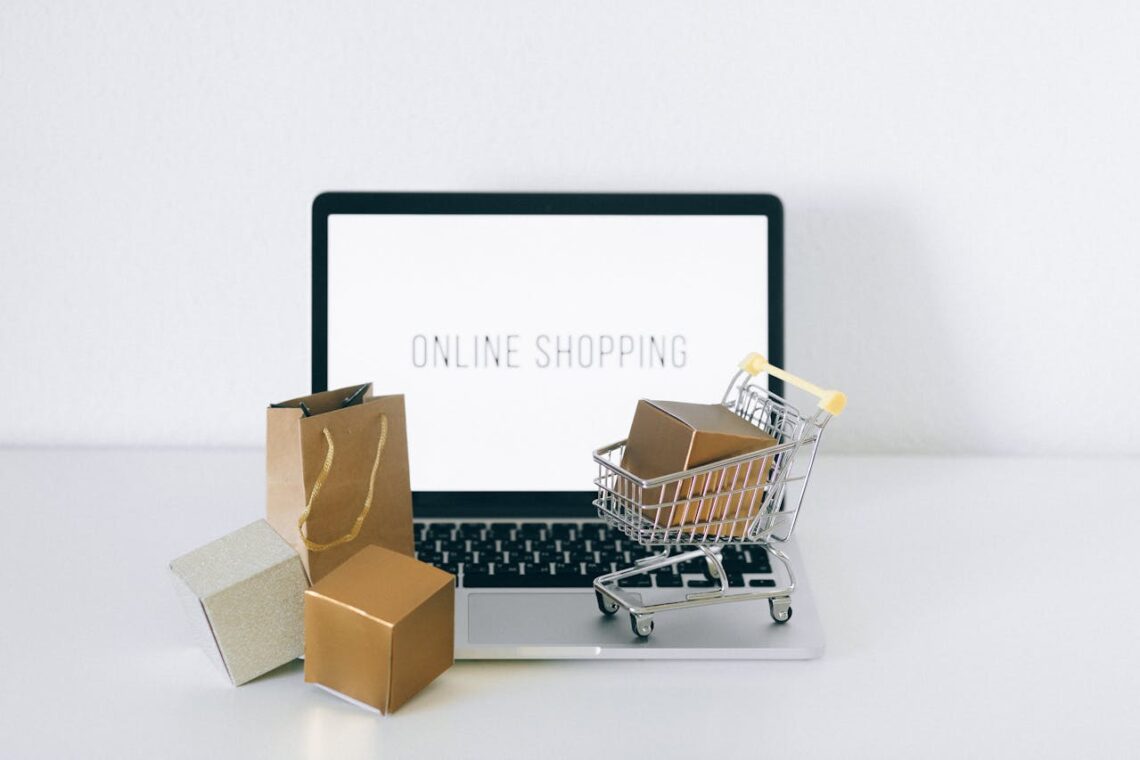
How to Launch a Successful Dropshipping Store That Thrives
Starting a dropshipping business is a great way to get into e-commerce with minimal upfront investment, as you don’t have to worry about managing inventory or shipping products. In this guide, we’ll walk you through two ways to set up your dropshipping store:
- Option 1: Bluehost + WordPress + WooCommerce
- Best for those who want more control, customization, and lower long-term costs.
- Option 2: Shopify
- Ideal for those who want an easier, all-in-one solution with minimal technical setup.
You can choose the option that best fits your needs, whether you prefer a highly customizable website or a quick setup that lets you start selling faster.
Option 1: Build a Dropshipping Store with Bluehost, WordPress, and WooCommerce
This option allows you to own your website by hosting it on Bluehost and using WordPress with the WooCommerce plugin to handle e-commerce.
Step 1: Choose Your Niche
Before you start building your store, choose a niche. This is the specific market you’ll focus on.
- Research Tools:
- Use Google Trends and Ubersuggest to discover trending products.
- Check out Amazon, eBay, and other marketplaces to find best-sellers in your niche.
Here are some examples of the most profitable niches you could consider:
- Health and Wellness
- Products: Supplements, fitness equipment, yoga mats, essential oils.
- Why it’s profitable: There’s a growing interest in health-conscious living, weight loss, and holistic wellness.
- Personal Finance and Investment
- Products: Budgeting tools, investment courses, cryptocurrency-related products.
- Why it’s profitable: People are constantly seeking ways to save money, invest wisely, and manage debt.
- Beauty and Skincare
- Products: Anti-aging creams, organic skincare, makeup products.
- Why it’s profitable: The beauty industry continues to grow, with consumers willing to spend on quality products.
- Tech Gadgets and Accessories
- Products: Smart home devices, wearables, phone accessories, gaming gear.
- Why it’s profitable: The technology market is always evolving, and people are eager to have the latest gadgets.
- Pet Products
- Products: Organic pet food, pet grooming tools, pet toys.
- Why it’s profitable: Pet ownership is on the rise, and many people consider their pets as part of the family.
- Home Decor and Organization
- Products: Minimalist furniture, wall art, storage solutions.
- Why it’s profitable: With the growth of remote work, people are spending more time and money on improving their living spaces.
- Online Education and E-learning
- Products: Online courses, eBooks, educational software.
- Why it’s profitable: More people are investing in self-education and upskilling due to changing job markets.
- Outdoor and Adventure Gear
- Products: Camping equipment, hiking boots, travel accessories.
- Why it’s profitable: Outdoor activities and adventure sports have seen a surge in popularity, especially post-pandemic.
Step 2: Purchase Domain Name and Hosting on Bluehost
You’ll need both a domain name and hosting to build your website. Bluehost is a popular option because it integrates easily with WordPress and offers affordable plans.
- Go to Bluehost:
- Visit the Bluehost website and click on “Get Started.”
- Choose a Hosting Plan:
- Start with the Basic plan if you’re just getting started. It includes a free domain name for the first year and a free SSL certificate for secure transactions.
- Choose Your Domain:
- Enter the domain name you want (e.g.,
yourstorename.com). Make it relevant to your niche and easy to remember.
- Enter the domain name you want (e.g.,
- Complete the Signup Process:
- Fill in your account details, review your package, and complete the payment.
Step 3: Install WordPress on Bluehost
Once you’ve purchased your hosting, it’s time to install WordPress, which will serve as the foundation of your site.
- Log into Your Bluehost Account:
- Access your Bluehost Dashboard and click on “Create Site” under the “My Sites” tab.
- Install WordPress:
- Bluehost makes it easy to install WordPress with just a few clicks. Follow the steps and enter your site name and details.
- Access Your WordPress Dashboard:
- Once installed, you can log into your WordPress site via
yourdomain.com/wp-admin.
- Once installed, you can log into your WordPress site via
Step 4: Install WooCommerce
WooCommerce is a free plugin that turns your WordPress site into a fully functional e-commerce store.
- Go to Plugins > Add New:
- Search for WooCommerce and click Install Now, then Activate.
- Complete the Setup Wizard:
- Enter your store details, such as your location, currency, and the types of products you’ll sell.
Step 5: Select a Theme and Customize Your Store
Your website’s theme determines how it looks and feels. WooCommerce works with many themes, both free and paid.
- Install a Free Theme:
- Storefront is a reliable, free theme that’s developed by WooCommerce. Go to Appearance > Themes > Add New, search for Storefront, and click Install.
- Customize the Look:
- Head over to Appearance > Customize to change colors, fonts, and layouts.
- Premium Themes:
- You can also explore premium WooCommerce themes on ThemeForest or Elegant Themes for more customization options.
Step 6: Install Essential Plugins
- AliDropship Woo Plugin: A must-have for dropshipping, it integrates with AliExpress to import products and automate the order process.
- Yoast SEO: Helps optimize your site for search engines.
- Jetpack: Offers security, performance monitoring, and other useful tools.
Step 7: Add Products and Set Up Dropshipping
- Source Products from AliExpress:
- Use the AliDropship Woo Plugin to import products directly from AliExpress into your WooCommerce store.
- Customize Product Listings:
- Edit the product titles, descriptions, and pricing to fit your brand.
Step 8: Set Up Payment and Shipping
- Payment Methods:
- Go to WooCommerce > Settings > Payments and set up PayPal or Stripe for payment processing.
- Shipping Settings:
- Since you’re dropshipping, configure your shipping zones and rates under WooCommerce > Settings > Shipping. Many dropshippers offer free or flat-rate shipping.
Step 9: Launch and Promote Your Store
Once everything is set up, you can remove the “Coming Soon” page and officially launch your store. Promote it via social media, email marketing, and paid ads.
Option 2: Build a Dropshipping Store with Shopify
If you prefer a quicker setup and an all-in-one platform, Shopify is a great option. Shopify handles the hosting, security, and many of the technical aspects, allowing you to focus on running your store.
Step 1: Sign Up for Shopify
- Go to Shopify:
- Visit the Shopify website and click on “Start Free Trial.”
- Enter Your Details:
- Sign up with your email and follow the steps to set up your store’s name and details.
- Choose a Plan:
- Shopify offers a 14-day free trial, after which you can select a plan. The Basic Shopify plan is a good starting point.
Step 2: Choose a Shopify Theme
Shopify offers both free and premium themes to give your store a professional look.
- Browse Themes:
- Go to the Shopify Theme Store and choose a theme that fits your niche.
- Customize Your Theme:
- Shopify makes it easy to customize your theme using its drag-and-drop editor. You can change colors, fonts, layouts, and more.
Step 3: Add Products and Set Up Dropshipping
- Install Oberlo:
- Oberlo is Shopify’s built-in app for dropshipping from AliExpress. Install it from the Shopify App Store.
- Import Products:
- Search for products in your niche and import them into your Shopify store using Oberlo.
- Customize Product Details:
- Edit the product names, descriptions, and pricing.
Step 4: Set Up Payment and Shipping
- Payment Gateways:
- Go to Settings > Payments and enable Shopify Payments or integrate PayPal for a smooth checkout experience.
- Shipping:
- Under Settings > Shipping, configure your shipping rates. You can choose to offer free shipping or charge based on the supplier’s rates.
Step 5: Launch and Promote Your Store
After adding products and setting up payments, you’re ready to launch! Promote your store using Shopify’s built-in marketing tools, like discount codes and email campaigns.
Which Option Is Best for You?
- Bluehost + WordPress + WooCommerce:
- Pros: Lower long-term costs, full customization, full control over hosting and data.
- Cons: Requires more technical setup, steeper learning curve.
- Shopify:
- Pros: Quick and easy setup, all-in-one platform with everything built-in.
- Cons: Higher monthly fees, less control over customization and hosting.
Both options are powerful for launching a successful dropshipping store. If you prefer more control and lower long-term costs, go with Bluehost, WordPress, and WooCommerce. If you want an easier, all-in-one platform with less technical work, Shopify is a great choice.
With this guide, you can choose the best path for launching your dropshipping store. Whether you go with WooCommerce or Shopify, you’ll be ready to start selling in no time!




